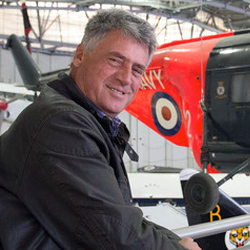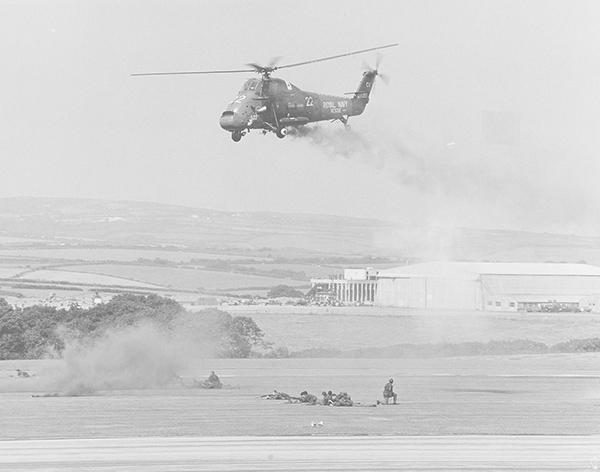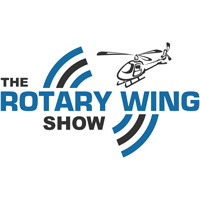Podcast: Play in new window | Download
Subscribe: RSS

As a Royal Navy SAR pilot Jerry Grayson was involved in a number of high profile rescue missions along with the crews of the Wessex helicopters he piloted. He has written a book – Rescue Pilot – that captures many of the stories of this part of his career.
Jerry decided early on in life that he was going to fly. He ended up at a very young age in the Royal Navy flying Sea Kings, Whirlwinds and Wessex machines. In this interview we cover several of the tales from his Navy career including his time upon the aircraft carrier HMS Ark Royal.
[Tweet “I’d had enough of school, its time to go flying”]
[Tweet “The deck of a carrier is THE most exciting place on earth”]
This of course only gets as a few years into Jerry’s career. After leaving the Navy, Jerry started a commercial helicopter company which saw him involved in a wide range of operations and flying a variety of helicopters.
One incident that we spend a little time going into depth on is a tailrotor driveshaft failure that Jerry experienced in an Augusta 109. It’s our hope that listeners might be able to draw in some small way from this experience should they ever find themselves unlucky enough to be in a similar situation.
Jerry has since gone on to significant success and renown as a helicopter film pilot with contracts on several high profile films (including Blackhawk Down with past guest Dennis Kenyon), Formula 1, Soccer World Cup, Olympics, Commonwealth Games and even written, directed and flown for an IMAX film.
There is a lot more to Jerry’s career and achievements so you’ll just have to listen to find out.
Podcast: Subscribe in iTunes | Play in new window | Download
In this week’s episode:
00:52 Rescue Pilot – book by Jerry Grayson
02:40 Book background and media appearances
07:06 BBC Fast Net Yacht Race reunion radio show
09:38 Finding old Whirlwind/Wessex airframes – firefighting training props, paintball field targets
11:50 Air Force Cross – highest award for gallantry in the air (UK) – Greek Medal of Honour
15:47 Meeting the Queen
16:40 Selection board for Royal Navy at 16
18:30 Flying scholarship to civil PPL school and running errands for Micky Lauder, race driver
19:55 British aircraft carrier Ark Royal
20:50 PlaneGuard role to pick up fixed wing aircraft ditching off carriers
22:45 Seaking stranded on the surface with one engine at night
26:35 Navigating overwater before GPS
30:30 Losing map out the window
32:40 Flying the Whirlwind/Wessex
37:30 Film flying and division of cockpit duties
38:50 Tail rotor failure in an Augusta 109
48:15 Airborne external inspection of tail rotor by S76
50:55 The last mile to the runway down to 60kts run on
56:10 Some advice on flying
58:50 What is next for Jerry Grayson
1:01:36 Video of Jerry talking about the Wessex helicopter and the book
1:02:00 Feedback on the show, leave a comment
Links from this week’s episode:
Episode Sponsors trainmorepilots.com
Rescue Pilot – book website
Helifilms Australia – Jerry’s Aerial Filming Company
World Helicopter Day
Jerry talks a little bit about the Wessex helicopter and rescues at sea in this promo video for his book.
[leadplayer_vid id=”555079860B909″]

[Tweet “The airflow in a helicopter is specifically designed to take your map out the window”]
[Tweet “So macho to climb up the side and mount your trusty steed (Wessex Helicopter)”]
Be part of the conversation and get involved in the comments section below. What questions do you have about Jerry’s interview?


Great show. A question, I know that in a engine failure, auto rotate. What is the normal procedure for tail rotor failure? Doesnt a tr failure make the aircraft uncontrollable?
Fair question. At the risk of appearing rude by second-guessing Mr Jerry Grayson, who after all is a highly decorated, highly experienced pilot, one would normally distinguish between TR control failure, and TR drive failure. In a TR control failure, the TR angle of attack is stuck in a certain position, but else the TR is producing the normal anti-torque force. In a complete TR drive failure, the TR stops spinning, an no anti-torque force is produced.
Now, with all respect, it appears that Jerry applied the procedure for TR control failure (shallow, run-on landing, and then at the last moment before touch down countering yaw tendency by reducing throttle) for what he had positively identified as a TR drive failure (remember, he had the other chopper fly next to him, confirming that his TR was ‘windmilling’, i.e., was not powered).
A TR drive failure is indeed the more dramatic emergency, and I would agree that the a/c could feel uncontrollable. With no anti-torque force available, only high forward speed would give you – thru the vertical stabilizer at the tail – some sort of directional stability. However, the moment the TR fails, you would immediately feel the strong yaw to the opp side of MR direction (Jerry reported an immediate 45 deg yaw).
Now, the normal emergency procedure would be to do an auto-rotation landing (from safe height) as soon a possible. (By entering auto, you cut the throttle, thereby removing the engine torque, thereby not needing the anti-torque TR, which is u/s). And not what Jerry said he did, namely to fly to an airport, and do a shallow approach, and then to cut or reduce throttle some 5 ft above the runway.
But then again, I have never flown a Wessex, and maybe the POH there prescribes a different TR emergency procedure …
Thanks, very interesting information.
Charles thanks for answering Lee’s question so well, much appreciated. Lee how much control you have depends on what condition the helicopter is in at the time. It becomes a balancing match of torque and whatever airflow you have over the tail that acts to keep the aircraft straight.
Jerry’s incident happened in an Agusta 109 which he points out has a large vertical fin so same procedure might not work for others. As Charles says normally it requires a reduction in power with auto entry. Flight manuals often add a note similar to “When a suitable landing site is not available, the vertical fin may permit limited controlled flight at low power settings and airspeeds above 70 KIAS; however, prior to reducing airspeed, re-enter full autorotation.” (From R44 POH)
If you are below 70kts or worst case in the hover then its going to be ‘exciting’. On the day you use whatever you’ve got to make the best of it.
Andrew its called Rescue Pilot – the book website has the first chapter avaliable for download http://rescuepilot.net I got my copy off the Kindle store.
Interesting discussion! For those interested check out page 206 of the Agusta 109 POH (attached link). Section ‘Complete loss of tail rotor in cruise’.
https://www.scribd.com/doc/173303200/Agusta-A109E-RFM-Rev-46-2006